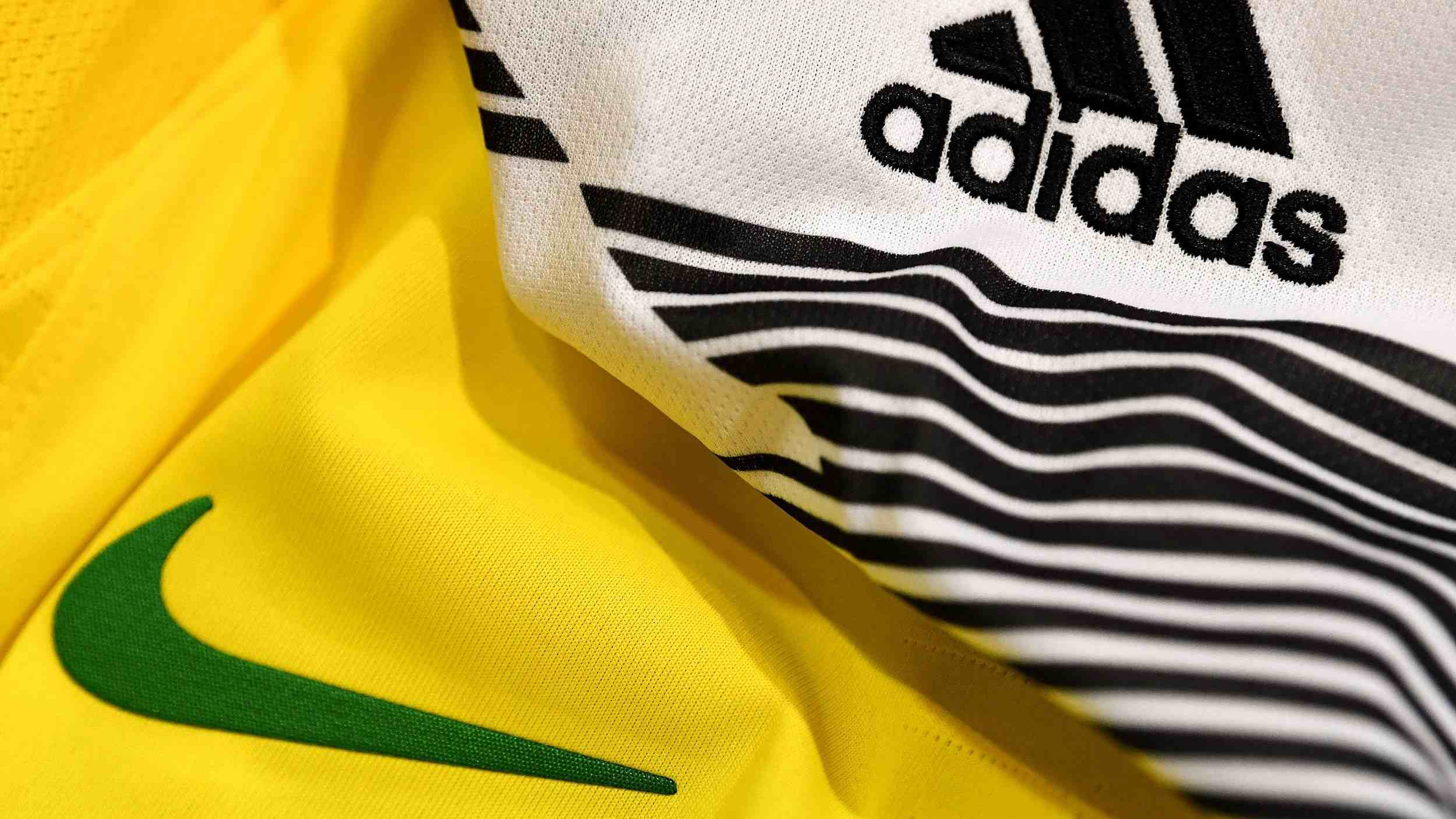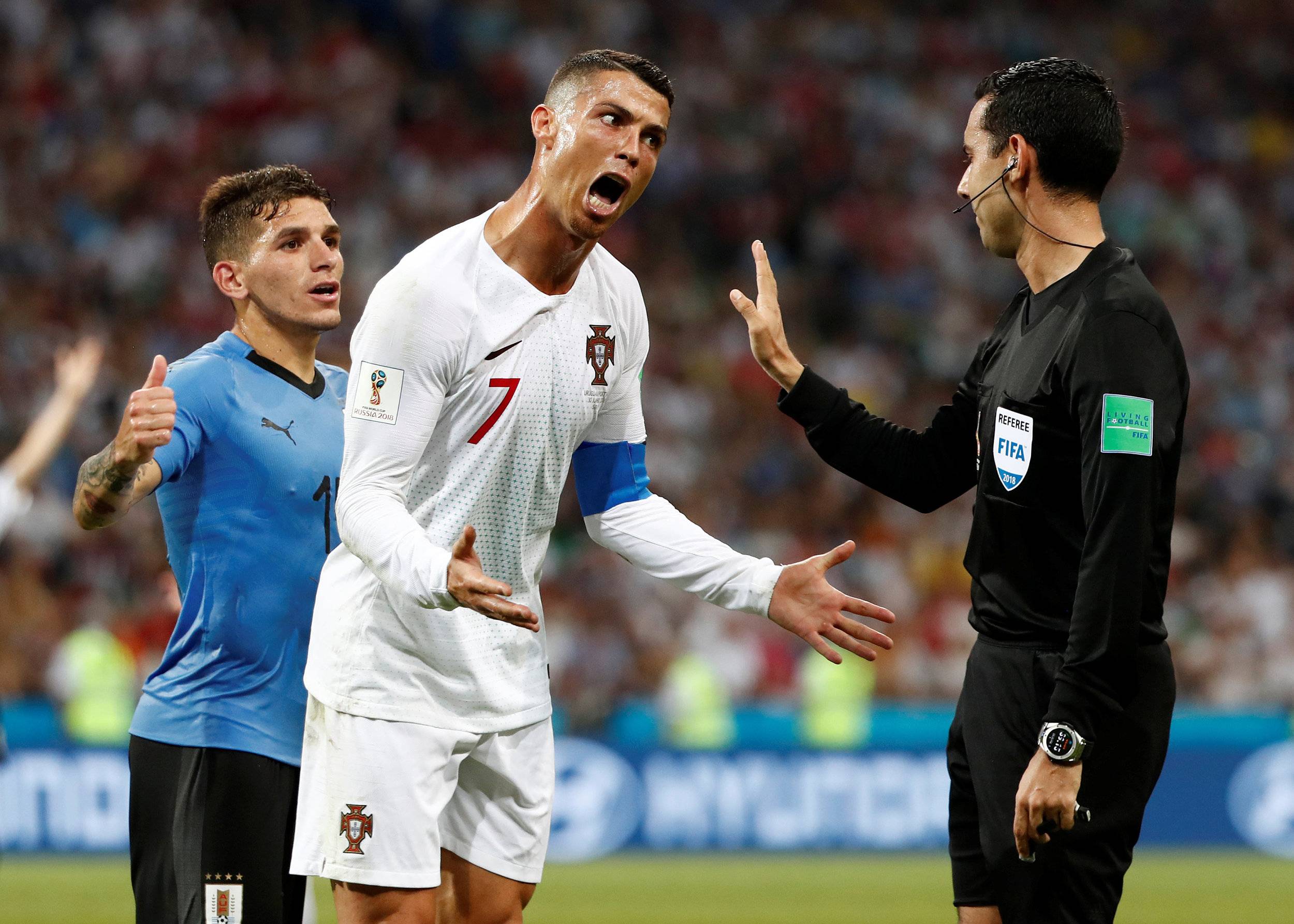
Business
15:38, 15-Jul-2018
Nike vs. Adidas: Who is the real winner of the World Cup?
Updated
14:46, 18-Jul-2018
Nicholas Moore

The World Cup concludes on Sunday, with millions of fans either backing favorites France or cheering on underdogs Croatia. Off the pitch, executives at Nike will be already rubbing their hands with glee, knowing that they have backed the tournament winner ahead of rival Adidas.
The Nike “swoosh” logo features on the kits of France and Croatia, as well as semi-finalists England, while Adidas-sponsored teams like Germany, Spain and Argentina all put in disappointing performances.

19-year-old France star Kylian Mbappe, who extended his Nike sponsorship deal in July 2017. /VCG Photo
19-year-old France star Kylian Mbappe, who extended his Nike sponsorship deal in July 2017. /VCG Photo
The multi-million dollar fight to back a winner
Previous World Cups have shown that sponsoring teams that go far in the tournament can be a massive boost to shirt sales. In 2014, some three million Germany shirts were sold, with the champions accounting for a third of Adidas’ total football-related sales of 2.1 billion euros (2.4 billion US dollars) that year.
Adidas, which also sponsored runners-up Argentina in the Brazil tournament, was the clear brand champion in 2014, after investing an estimated 100 million US dollars in marketing that year.
The German company has long looked to dominate rivals Nike, Puma and New Balance in the World Cup by working with FIFA as official partners, a deal that has existed since 1970 and will continue until at least 2030.

As an official FIFA partner, Adidas has a major branding advantage over its rivals. /VCG Photo
As an official FIFA partner, Adidas has a major branding advantage over its rivals. /VCG Photo
Ever since the USA hosted the World Cup in 1994, Oregon-based Nike has looked to break that cycle of domination.
While Adidas spent a huge 56.7 million US dollars on sponsoring the German national team this year, Nike spent 56 million and 40 million US dollars on backing France and England respectively.
For Nike, it’s all about the Instagram effect
Adidas may sponsor the tournament and splash branding across stadiums, the referees and the ball itself, but Nike’s strategy is to focus on working with individual stars, a tactic that has paid off this year.
As this year’s tournament has progressed, Nike-backed stars like France’s Kylian Mbappe and Croatia’s Luka Modric have been lauded as players of the tournament.
Cristiano Ronaldo’s Portugal and Neymar’s Brazil may not have gone as far as their fans would have hoped, but Nike’s individual sponsorship deals with the superstars would have guaranteed huge shirt sales in the run-up to the World Cup.
Nike has a lifetime deal with Ronaldo, believed to be worth one billion US dollars. With hundreds of millions of followers across social media, analysis firm D’Marie Analytics estimates just one post by the Portuguese star across Facebook, Twitter and Instagram has a media value of 728,973.35 US dollars. Neymar can offer a value of around 432,000 US dollars.

Key Opinion Leader: Cristiano Ronaldo is one of social media's biggest influencers. /VCG Photo
Key Opinion Leader: Cristiano Ronaldo is one of social media's biggest influencers. /VCG Photo
While some national teams are not sponsored by Nike, individual players with their own personal sponsorship deals can still wear the US company’s footwear.
Belgium captain Eden Hazard may be wearing an Adidas shirt, but his boots are emblazoned with the Nike swoosh – like many other players, he has an individual sponsorship deal with the US company.
In fact, 96 of the 152 goals scored so far have hit the back of the net from a Nike-sponsored player. In contrast, Adidas has only “scored” 37 goals. With replays of stunning goals played and shared millions of times across television and social media, Nike’s goalscoring success will prove invaluable.
Nike vs. Adidas: Who really won?
A clear winner between Nike and Adidas won’t emerge until both companies release sales data, but a look at comments from both companies points to the mood in both camps.
Talking to German media Handelsblatt, boss of Nike Europe Bert Hoyt said “thanks to the good performance of our teams, the jerseys are selling phenomenally,” before going on to say that supplies of shirts were running out for some teams, including England.
Nike were also behind the eye-catching Nigeria jersey, a shirt so popular that it sold out online after three million pre-orders before the tournament even began, and saw fans lining up outside the Nike London store to get their hands on it.

The Nigerian national team shirt. /VCG Photo
The Nigerian national team shirt. /VCG Photo
In contrast, Adidas CEO Kasper Rorsted played down expectations ahead of the tournament, telling investors the tournament in Russia would not see the same success as the 2014 World Cup, saying “we see this as a brand-building event. The direct financing impact is limited.”
Investors have been watching the tournament closely, and a look at share prices over the past week paints a clear picture of their expected winner. While Nike is up by 2.03 percent, Adidas is down 6.05 percent since the tournament kicked off, with shares in the company dropping 2.7 percent after Germany crashed out of the tournament.
(Top image: VCG Photo)

SITEMAP
Copyright © 2018 CGTN. Beijing ICP prepared NO.16065310-3
Copyright © 2018 CGTN. Beijing ICP prepared NO.16065310-3